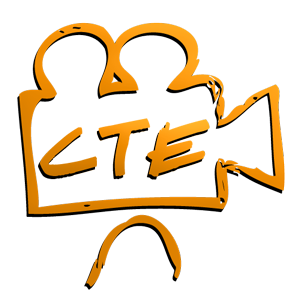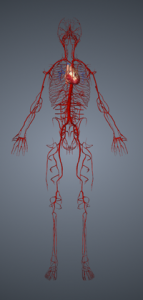The Muscular System Explained in 6 Minutes
Categories: CTE, New Videos Added to CTE Skills Library
Our basic concept here at CTEskills.com is to provide you with the necessary information in a clear, concise, and to the point manner. This really reflects in one of our latest videos.
The Muscular System Explained in 6 Minutes.
The muscular system is indeed very complex, just like all of the body systems, but with this short video you should at least have a basic understanding of what makes up the muscular system, its properties, and functions.
For a more in depth study of the muscular system, look for future CTE videos where we will cover topics such as the 14 major muscle groups, as well as common diseases and conditions specific to the muscular system.
The Muscular System – An Overview
The muscular system is made up of over 600 muscles. While we won’t be covering all 600 plus individual muscles in this overview video, we will be discussing the…
- main functions of the muscular system,
- the 5 major properties
- the 5 types of muscle movements
- 3 types of muscles
- and how all of this works together to make up the muscular system.
The primary purpose for the Muscular system is to provide movement for the body. The muscles receive their ability to move the body through the nervous system.
Major Properties of the Muscular System
There are 5 major properties to the muscular system
- Excitable or Irritable: Muscles are Excitable or Irritable. This means that they are capable of receiving stimulation and responding to stimulation from the nerves.
- Contractible: They are contractible. After receiving stimulation, they are capable of contracting, or shortening.
- Extensible: Being extensible means a muscle can be stretched without damage by the application of force.
- Elasticity: With elasticity, a muscle is able to return to its original resting shape and length after being extended or contracted.
- Adaptability: The muscular system is adaptable in that it can be changed in response to how it is used. For example, a muscle will enlarge, or undergo hypertrophy with increased work; but on the other hand it can go in atrophy, or waste away if deprived of work.
Types of Muscle Movements
Now, lets look at the 5 types of muscle movements.
- Adduction...is the moving of a body part toward the mid-line of the body.
- Abduction…is moving a body part away from the body.
- Flexion…Flexion means bending a joint to decrease the angle between two bones or two body parts.
- Extension…extension is straightening and extending of the joint to increase the angle between two bones or body parts.
- Rotation… and last, rotation involves move a body part around an axis.
3 Types of Muscles
The Muscular System is divided into three main types. Each of these types can be moved 1 of 2 ways. either voluntary, or involuntary. 
- Cardiac Muscle – The cardiac muscle, is an involuntary muscle; meaning it operates without any conscious control.
- The Visceral or smooth muscles, are also considered involuntary – these muscles are found in organs or organs systems such as the digestive or respiratory system.
- The third type of muscle is the Skeletal muscle. These are what we would typically think of when talking about muscles. These muscles attach to the skeleton and provide the skeleton with the ability to move. The Skeletal Muscles are classified as voluntary. This is because we have to make a conscious effort or decision to make them move.
Supportive Structures
Although muscles obviously make up muscle system, there are still some supportive structures we need to look at that are also a necessary part of the system. Tendons and fascia are important supportive structures for the Skeletal muscles.
Simply put,Tendons are what attach a muscle to a bone. Fasciae connect muscles to other muscles. Tendons and Fascia work together with the muscles, which creates the muscular system necessary for movement.
The Nervous System
While not technically part of the same system, the nervous system is intrinsically connected to the muscular system of the body. It is essential to the voluntary skeletal muscles.
If the communication from the nervous system is severed from the skeletal muscles, the skeletal muscles will not be able to produce movement for the body. The body is now in a state of paralysis. This is known as quadriplegia. The only organ that is not directly dependent upon the nervous system is the Cardiac (heart) muscle.
RECAP:
There are over 600 hundred muscles in the human body.
There are 5 major properties to the muscular system.
- Excitable or Irritable
- Contractible
- Extensible
- Elasticity
- Adaptability
There are 5 types of muscle movements.
- Adduction…
- Abduction…
- Flexion…
- Extension…
- Rotation…
There are 3 Types of Muscles; voluntary and involuntary
- Cardiac Muscle – involuntary
- The Visceral or smooth muscles – involuntary
- Skeletal muscle – voluntary
Supportive Structures
Tendons and fascia are important supportive structures for the Skeletal muscles.
The Nervous System is intrinsically connected to the muscular system of the body. It is essential to the voluntary skeletal muscles…
TRIVIA QUESTION: Why do you think your walk changes when intoxicated? People who are drunk stagger as they walk. Why is that? Is the alcohol affecting the voluntary muscles or is it affecting the nervous system?
Closing
Now there is so much more to discuss about the muscular system but that’s as far as we will go in this introductory video. After watching this video you should at least have a basic understanding of what makes up the muscular system, its properties and functions.
For a more in depth study of the muscular system, look for future CTE videos where we will cover topics such as the 14 major muscle groups, as well as topics such as common diseases and conditions specific to the muscular system.


